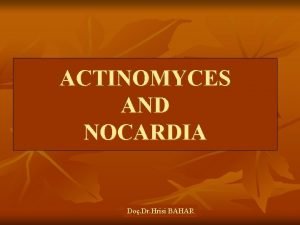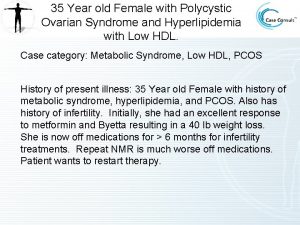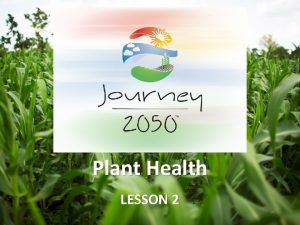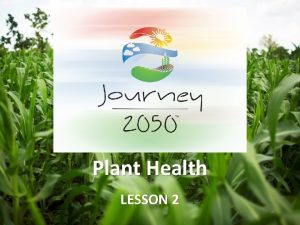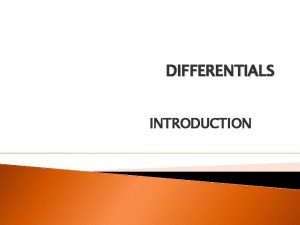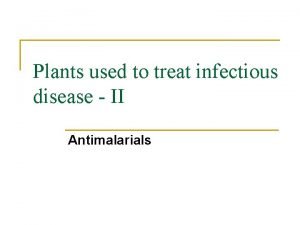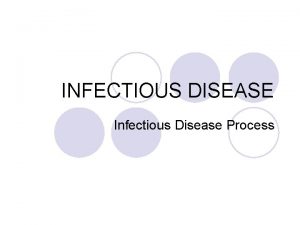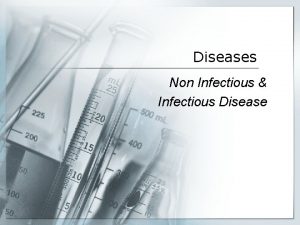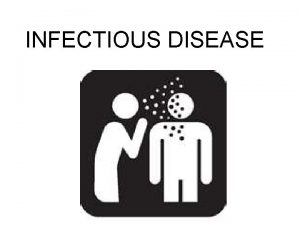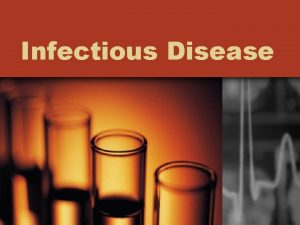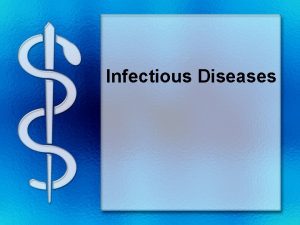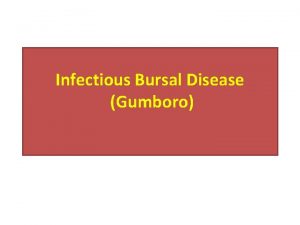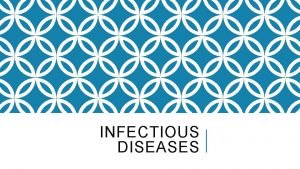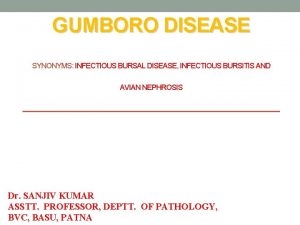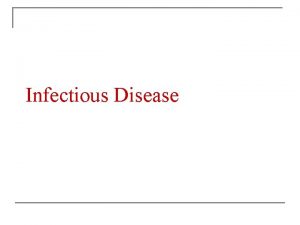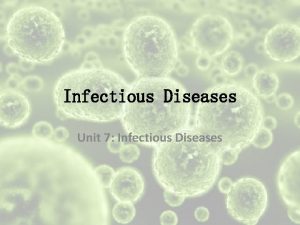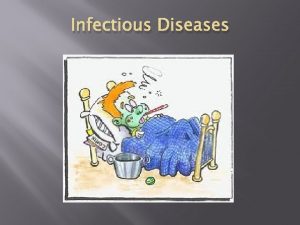Plants used to treat infectious disease III Plant






























- Slides: 30

Plants used to treat infectious disease - III Plant Products as Antimicrobial Agents

Plant Products • • Long history of use as antimicrobials Very few have made the transition from herbal remedies to mainstream drugs Often much weaker than antibiotics Renewed interest largely due to antibiotic resistance

Chaulmoogra Oil

Leprosy - Hansen’s Disease n n n Chronic skin disease endemic to tropical and subtropical areas Caused by bacterium, Mycobacterium leprae Bacterium discovered by Gerhard Hansen - one of the first bacteria associated with a disease Transmitted: contact between susceptible people? ? It has the potential to produce mutilation of extremities and disfigurement of the face Apparently two forms q q Tuberculoid type may be limited to a few nerves and skin area Lepromatous type is disseminated throughout the body

Hansen’s disease in 2004 n n 407, 791 new cases detected worldwide Around 100 cases occurring in the United States WHO listed Brazil, Madagascar, Mozambique, Tanzania, and Nepal as having 90% of cases Worldwide: 1 -2 million persons are permanently disabled as a result of Hansen's disease


Chaulmoogra Oil n n n Mentioned in the Hindu Vedas over 2000 years ago as helping in curing leprosy Oil reached Europe in the mid-nineteenth century, but source was unknown Joseph Rock traveled Asia in 1920's, identified source of chaulmoogra as Hydnocarpus trees of India and surrounding countries Rock sent seeds to Hawaii, where Hydnocarpus plantations were started The only effective treatment for leprosy until sulfa drugs were used in 1946

Chaulmoogra Oil n n n Earlier use in Hawaii Alice Ball (1892 -1916) worked on chaulmoogra oil to treat leprosy Died in 1916 (24 yrs old) - work was taken over by Arthur Dean who initially got credit for work with chaulmoogra oil

Chaulmoogra Oil n n n Source: seeds of Hydnocarpus wightiana and Hydnocarpus anthelmintica is triglyceride of fatty acids containing cyclopentenyl group Given by injection to patients with leprosy Symptoms went away and bacteria disappeared from nasal secretions but relapse often occurred q q n Early cases were completely cured More established cases had relapse Today standard treatment is combined drug therapy – 3 antibiotics: dapsone, rifampin, and clofazimine

Herbal Remedies

Herbal Remedies n n Many herbal remedies on the mass market are known to have antimicrobial activity One example: berberine Several herbal remedies containing the alkaloid berberine show antimicrobial activity against a variety of bacteria, fungi, protozoans, worms, chlamydia, and viruses Extracts of these plants used in Ayurvedic and Chinese medicine for about 3000 years

Berberine containing herbals and plant part used

Berberine research on-going n n n Much of the research focused on its use in cases of diarrhea, including that caused by Vibrio cholerae and Escherichia coli In one study, berberine had antimicrobial activity against gram-positive and gramnegative bacteria, fungi, and protozoa Berberine has been also shown to inhibit HIV 1 reverse transcriptase

Berberine as an antimicrobial n n n Activity still weak compared to antibiotics Possibly do to MDR pumps in bacterial cell membranes Research focus on MDR inhibitors in Berberis fremontii and other species of berberine containing plants

Herbs and Spices

Herbs and spices n n n Herbs are aromatic leaves or seeds from plants of temperate origin Spices are aromatic fruits, flowers, bark or other plant parts of tropical origin While herbs and spices are mainly associated with cooking, they are also used, as natural dyes, in perfume, cosmetics, and traditionally used in medicine

Essential Oils n n n Value of herbs and spices due to essential oils Most commonly found in leaves, flowers, and fruits where they occur in glandular trichomes Chemically, essential oils are most commonly terpenes, but may be phenolics

History of spices n n n n Early history Ebers Papyrus Ancient Greece and Rome Dark Ages Venice and Genoa – Marco Polo Prince Henry of Portugal Age of Exploration 16 th to 19 th centuries

Herbs and spices n n Over the past 30 years dozens of studies have focused on the antimicrobial properties of herbs and spices Most spices have antimicrobial properties Growing feeling that the enduring value of spices is actually due to these antimicrobial properties Paul Sherman from Cornell one of the leading proponents of this hypothesis

Why use spices? n Obvious answer is that they impart pleasing tastes to foods: q q Why do people find taste appealing? Why are there preferences for certain spices in cuisine of different regions?

Predictions based on spice use n n n Sherman and his students developed an antimicrobial hypothesis If spices kill microorganisms or inhibit their growth or production of toxins, then spice use would protect us from food borne illness and food poisoning To test the hypothesis, they developed critical predictions

Antimicrobial activity n Prediction 1 - Spices used in cooking exhibit antimicrobial activity q q Overwhelming evidence that most spices have antimicrobial properties Inhibition of bacterial especially important because they are more common in food poisoning than fungi


Spice use in hotter countries n Prediction 2: Use of spices should be greater in hot climates where unrefrigerated foods spoil quickly q q Looked at spice use in traditional recipes and correlated it with temperature Use of spices greater in hotter area n Percent of recipes calling for at least one spice and the number of different spices were all greater in warmer countries - especially true for highly inhibitory spices (inhibited 75% of bacteria tested)

Spices kill food-borne bacteria n Prediction 3: Spices used in each country should be particularly effective against the local bacteria q q q Unfortunately no lists of native food-borne bacteria Sherman et al looked at effectiveness of native recipes in killing 30 common food-borne bacteria As annual temp increased, the estimated percent of bacteria that would be inhibited also increased


More spices used with meats n Prediction 4: Within a country meat recipes should be spicier than vegetable recipes q q Unrefrigerated meats associated with more foodborne disease outbreaks and food poisoning Meat-based recipes from all 36 countries called for an average of 3. 9 spices, significantly more than 2. 4 spices in average vegetable recipes


More spices in hotter areas n Prediction 5: Within a country, recipes from lower latitudes and altitudes should be spicier than higher latitudes and altitudes q q q Difficult to find recipes tied to altitude In US and China, recipes from southern latitudes used a greater variety of spices and spices used more often Southern recipes contained spices more likely to kill or inhibit bacteria

Alternate Hypotheses n n Spices disguise the smell and taste of spoiled foods - ignores dangers of spoiled meats which could be deadly Spices used as medicines - dosage is different and all people use the food Spices used in hotter climates because it helped increase perspiration (only works for chilis and horseradish) Spices used because they taste good - some spices initially distasteful - yet people continue to use
 Which seedless plants have been used to treat bee stings?
Which seedless plants have been used to treat bee stings? Why are seedless vascular plants important
Why are seedless vascular plants important Boundaries meme
Boundaries meme Infectious disease quality controls
Infectious disease quality controls Stages of infection
Stages of infection Chapter 26 infectious disease prevention and control
Chapter 26 infectious disease prevention and control Stages of infectious disease
Stages of infectious disease Infectious disease board review
Infectious disease board review Infectious disease
Infectious disease Hennepin county infectious disease manual
Hennepin county infectious disease manual Viruses are the smallest infectious agents
Viruses are the smallest infectious agents Is byetta used to treat pcos
Is byetta used to treat pcos Hamlet act iii scene iii
Hamlet act iii scene iii Bharathi viswanathan
Bharathi viswanathan Reproduce by spores
Reproduce by spores Vascular plants vs nonvascular plants
Vascular plants vs nonvascular plants Examples of non flowering plants
Examples of non flowering plants Photosynthesis equation
Photosynthesis equation How does a plant resist disease and pests journey 2050
How does a plant resist disease and pests journey 2050 Journey 2050 student handout 2 word search
Journey 2050 student handout 2 word search Methods of plant disease management
Methods of plant disease management Taichum
Taichum Define infectious waste
Define infectious waste Infectious canine hepatitis in dogs
Infectious canine hepatitis in dogs Certain infectious and parasitic diseases
Certain infectious and parasitic diseases Papillomitosis
Papillomitosis Infectious nucleic acid
Infectious nucleic acid Infectious mononucleosis
Infectious mononucleosis Ebv
Ebv Epidemiological triad of malaria
Epidemiological triad of malaria Skeleton hand whmis
Skeleton hand whmis








